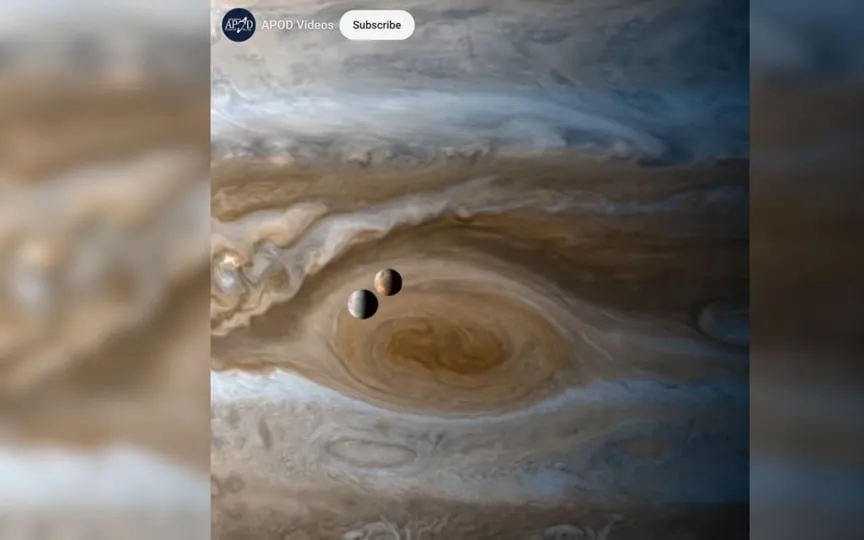Jupiter’s Great Red Spot Showcased in NASA Astronomy Picture of the Day 13 June 2023
Astronomers have been fascinated by Jupiter for centuries, dating back to Galileo Galilei’s observations in 1610. This Gas Giant boasts a thick atmosphere of hydrogen and helium, along with ammonia clouds that create strong winds. As the largest planet in our solar system, it is twice the size of all other planets combined. Additionally, it holds the record for the most moons in our solar system, with 92 confirmed moons and orbits, according to the International Astronomical Union’s Minor Planet Center.
Today’s NASA astronomy image is a snapshot of Jupiter’s two largest moons, Europa and Io, crossing the gas giant. At nearly 1,821 kilometers in radius, Io is the third largest of Jupiter’s four Galilean moons. On the other hand, Europa is the smallest Galilean moon, but it has more water than Earth! NASA’s Cassini spacecraft captured the two moons as they crossed Jupiter’s Great Red Spot, the largest storm in our solar system.
The technique used to take the picture
The robotic spacecraft carried several technical instruments for capturing objects in space, such as the Visual and Infrared Mapping Spectrometer (VIMS). According to NASA, VIMS was two cameras in one instrument: one measuring visible wavelengths, the other infrared, and they helped scientists study things like the composition of Saturn’s rings and moons, and the atmospheres of Saturn and Titan.
NASA description of the image
Jupiter’s moons orbit Jupiter. The featured video depicts Jupiter’s two largest moons, Europa and Io, crossing in front of the planet’s Great Red Spot, the largest known storm system in our solar system. The video is made from images taken by the Cassini robotic spacecraft as it passed Jupiter in 2000 on its way to Saturn. The two visible moons are volcanic Io in the distance and icy Europa. In the timelapse video, Europa appears to be passing Io, which is strange because Io is closer to Jupiter and moves faster. The explanation is that the movement of the fast Cassini spacecraft significantly changes the position of the camera during imaging. NASA’s robotic Juno spacecraft is currently visiting Jupiter, while ESA’s Jupiter Icy Moons Explorer (JUICE), launched in April, is on its way.




